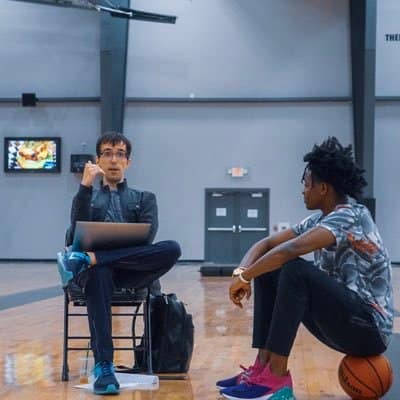Villanova is back for an encore performance after winning last season's NCAA Tournament. While the rotation is tight, the talent and role allocation is as good as it can be for the Wildcats thanks to the return of Josh Hart, Kris Jenkins and Jalen Brunson. How did the Big East powerhouse come to be this year? We take a look.
STEP ONE: BUILDING THE CORE
Hart, a Player of the Year candidate and Villanova’s catalyst for success the past two seasons, didn’t hit the Main Line as an elite, can't-miss prospect. The Silver Springs, Md. product was ranked No. 84 in the 2013 Rivals150 and chose the Wildcats over Penn State and Rutgers. Fast forward four years and Hart is one of the most efficient players in college basketball, averaging over 18 points, six rebounds and three assists per game as a senior.
While Hart’s commitment turned out to be huge, Jenkins may have been the first to set things in motion. Most of America now thinks of Jenkins as the player that hit the game-winning 3-point shot in last year’s national championship game but, as a senior in high school, the Villanova star was more of an overweight forward that ranked No. 74 in the 2013 Rivals150.
Were it not for Jenkins' commitment to the Wildcats, Hart's pledge may never have happened.
“It's definitely something I took into consideration, just knowing that my brother is going to come up there with me, just knowing that I'm not going to be up there alone," Hart told Rivals.com following his college commitment. "That was something that always helped Villanova."
While Hart and Jenkins are the two off-ball dynamos that create matchup issues, Brunson has seamlessly slid into the lead guard spot vacated by the graduation of Ryan Arcidiacono. Brunson, a former five-star prospect, is averaging over 14 points and four assists per game as a sophomore campaign. During the recruiting process, the Chicago native appeared to be on track to ink with Temple - Brunson's father was originally slated to be named an assistant on Fran Dunphy's Owls staff - but Villanova swooped in when those plans fell through.
STEP TWO: ROLE PLAYERS
Wright has had to use a limited rotation throughout most of Villanova's 2016-17 season, making every player's contribution vital to the team's overall success.
Omari Spellman, a 6-foot-9 McDonald’s All-American from the 2016 class, sat this season after failing to meet the NCAA's initial eligibility requirements. Perhaps even more notably, Phil Booth, the sparkplug that scored 20 points in last year’s national championship game, has missed all but three games this season due to an injury.
In their absence, other players have stepped up. Mikal Bridges is a super versatile piece that plays over 30 minutes per game for the Wildcats. Donte DiVincenzo, the team's glue-guy, can play various spots on the floor. Eric Paschall, a one-time Fordham standout, is averaging seven points and four rebounds per game. Each have aided in Villanova’s pursuit for consecutive national championships but if there is one X-factor, it would be Darryl Reynolds.
STEP THREE: THE X-FACTOR
Every player is important in a seven-man rotation, but Darryl Reynolds would have to be considered Villanova's X-factor. The Philadelphia product is the only true 5-man to play this season, and his value is in his ability to protect the rim and score with efficiency. Reynolds was a lightly-recruited three-star prospect coming out of high school and played a grand total of 201 minutes during his years as an underclassman on the Main Line.
